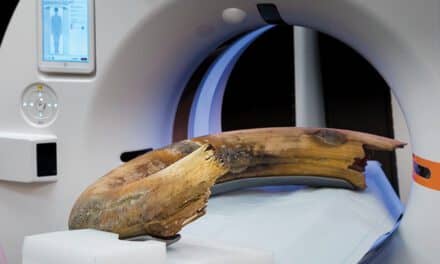 Sometimes, you just can’t have it all. You might want it all, you might need it all?but realistically, you cannot have it. Or can you?
Sometimes, you just can’t have it all. You might want it all, you might need it all?but realistically, you cannot have it. Or can you?
Medical institutions today might not have the resources necessary to buy all of the medical-imaging equipment they need, but they might still be able to offer it to their patients through mobile imaging services.
Mobile imaging has found its niche by providing the high-tech imaging equipment that some hospitals find prohibitively expensive. CT and MR technology have increased their penetration in the market, but newer technologies, such as PET and SPECT, must still prove their worth, both clinically and economically, to justify their expense in certain markets. Mobile imaging allows hospitals to determine if the service is valuable to its customers and, therefore, valuable to the institution.
If your facility is thinking of adding mobile PET or SPECT to its list of service offerings, keep in mind the following six considerations.
1) Determine Necessity
Mobile services can be used to fill a need, whether short- or long-term. A hospital already could be committed to adding PET to its imaging menu, but it needs to provide the service while it awaits the purchase and installation of its own system. Another hospital might need to run through a backlog of patients while catching up from situations that range from disaster recovery to facility renovations. Still another hospital might not be quite sure if the technology is appropriate for its patients and wants to test the technology’s use before fully committing. And yet another hospital might need to provide the service, but not at a volume that justifies purchasing a system, which runs anywhere from $850,000 to more than $2 million.
Contracting with a mobile imaging service provider can fill all of these needs while avoiding the risk of purchasing equipment that cannot be sustained. Not only can the initial expense be prohibitive, but so can the cost of ownership. Both PET and SPECT use radioactive imaging agents, such as fluorine-18 deoxyglucose (FDG), that add additional expense and must be handled according to regulations.
“PET is very expensive, and a facility must understand the economics of providing the service, including issues surrounding reimbursement, which will likely decrease over time. Ten patients a month is not likely to sustain it, but 150 patients would be worth it,” says Randy W. Skiles, CEO of Shared PET Imaging LLC (Canton, Ohio). “SPECT is about 25 percent the cost of PET; but currently, its primary application is specific to cardiac imaging. PET is more likely to be offered by mobile imaging providers.”
2) Decide Frequency
After a hospital decides to contract with a mobile service, administrators next need to consider how frequently and for what length of time it will need the mobile unit to visit.
Mark Casner, president and COO of DMS Imaging (Fargo, ND), suggests that this step might be difficult for a facility that is launching a new modality with no prior history. “Perhaps the easiest way is to start with half-day service and build up as the volume grows,” he says. “Facilities also can survey the referring physicians and discern from them their notion of referral patterns.”
Skiles agrees that physicians can provide insight into volume. He, too, recommends beginning with fewer days rather than many. He starts clients with one full day or two half days. “Quite often, a facility has no idea how much volume they will need to accommodate and overestimates, requesting two or three days a week,” he says. And that can be too much for the beginning.
3) Make Space
However often the mobile unit visits, it will need to have space designated for it. “Nearly 80 percent of the time, the hospital has used some sort of mobile technology before and already has the space set aside,” Skiles says.
If not, however, a large space will need to be found?which could pose a slight challenge. According to Casner, the area must be level and able to accommodate a trailer that can weigh as much as 60,000 lbs (30 tons). The tractor, which can be disengaged after delivery, can add another 20,000 lbs (10 tons). “The trailer needs to be able to get in and out, and this [factor] is often overlooked when doing the initial siting. Our trailers are 48 to 53 feet, plus the tractor?big turning radius,” he says.

The area will need to be close to the hospital with power, telephone, and any other communication services, such as Internet and PACS connections. Many facilities build a covered awning or weather-protected passageway. “Cost will be between $5,000 and $10,000, depending on how much work needs to be done,” Casner says. Most mobile service providers can help with site planning, if needed.
4) Consider Legal Issues
When it comes to the paperwork required, mobile service providers often will help. Because the service involves radioactive materials, there are more regulatory concerns than usual, and the licensing and approval process can take more than a year, depending on the state.
Every state will require nuclear licensure, and the technologists must be trained and licensed. “In the case of PET/CT, some states require dual certification as an RT and a nuclear medicine technologist,” Casner notes.
Some states also will require a Certificate of Need (CON); others will have different and/or additional requirements. For instance, Skiles notes that regulators in Ohio will want to inspect the site before granting certification.
The mobile provider also will need to comply with all of the regulatory bodies, including the Joint Commission on Accreditation of Healthcare Organizations (JCAHO of Oak Brook Terrace, Ill). “We must follow the same rules as other medical institutions,” Skiles explains.
And that includes the handling of FDG. Because of its short half-life (110 minutes), the amount needed must be calculated beforehand, factoring in the patient and appointment time. Casner’s clients handle disposal, which is typically a nonissue due to the product’s short half-life.
5) Select a Vendor
Having a mobile service provider who handles all of the aforementioned issues, as most do, helps a hospital deliver the service more cost-efficiently. “Equipment costs and delivery of pharmaceuticals can create difficulties for facilities to offer these services on their own, and mobile services can help fill that void,” Casner says.
When selecting a vendor, facilities should consider a number of factors. The hospital will want to be sure that the mobile service provider is fully accredited and will want to check its references. The facility should ask the provider about the availability of its assets and downtime; staffing; the technology used; the ability to tie into the hospital’s PACS and other IT systems; and service enhancements, such as marketing, business development, and training.
Some hospitals might consider creating their own mobile service to move between its multiple facilities, or others could band together to share a single unit. “Doing [either] can help expand market share and bring down costs, but a mobile provider can still help with planning and/or managing the program,” Skiles says.
Casner agrees that management of the program can be the most challenging aspect. “Buying the equipment is the easy part; the daily operations are important to extend the quality of care that the facility offers to its patients and referring physicians,” he says. “What does [the hospital] do when the system goes down? How will [the hospital] staff the system? Can [the hospital] handle the logistics of moving the mobile asset? How far apart are the locations, and is the route practical? One of the biggest questions is determining whether the collective volume of all locations justifies the purchase of an asset”?especially when keeping in mind that these units are expensive.
6) Weigh the Risks
Mobile equipment is now as good as that found in-house. “With advances in suspensions and hardening of wires, there is technically no difference,” Skiles notes. Mobility does create some limitations, however. The 64-slice CT technology is still too heavy to transport, and the quarters can be rather confined. “Availability could be an issue, and it is not as convenient as a fixed site, often creating some issues for nonambulatory patients and throughput,” Casner explains.
Mobile service providers eliminate not only the risk of purchasing equipment that will result in a revenue drain but also the risk of obsolescence. “Mobile providers bear the brunt of technological obsolescence. A hospital is less likely to update the equipment as often,” Skiles says.
Of course, such a hospital might want to try out the service first and, thus, is back at square one, turning to a mobile provider to help determine value, some of which is intangible. “Hospitals want to keep patients close to home and their support system,” Skiles says. A mobile unit can help provide the services to fill this need, and let the hospital have it all.
Renee DiIulio is a contributing writer for Medical Imaging.




